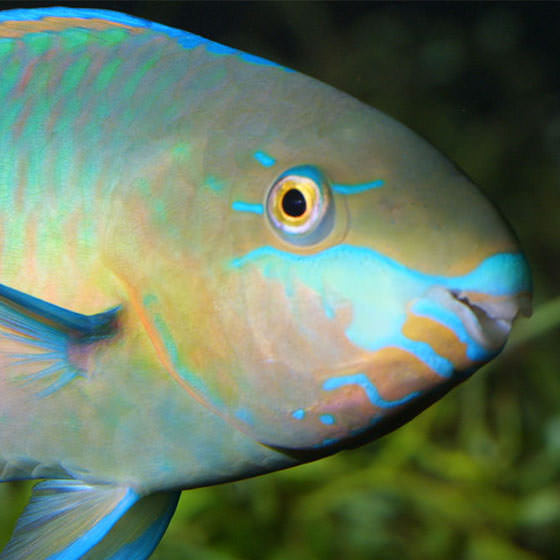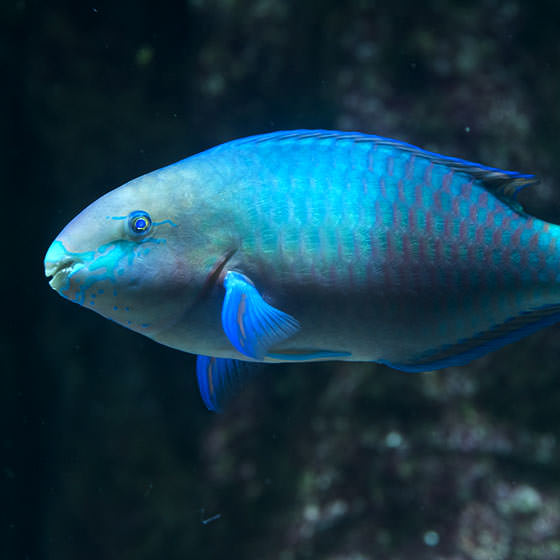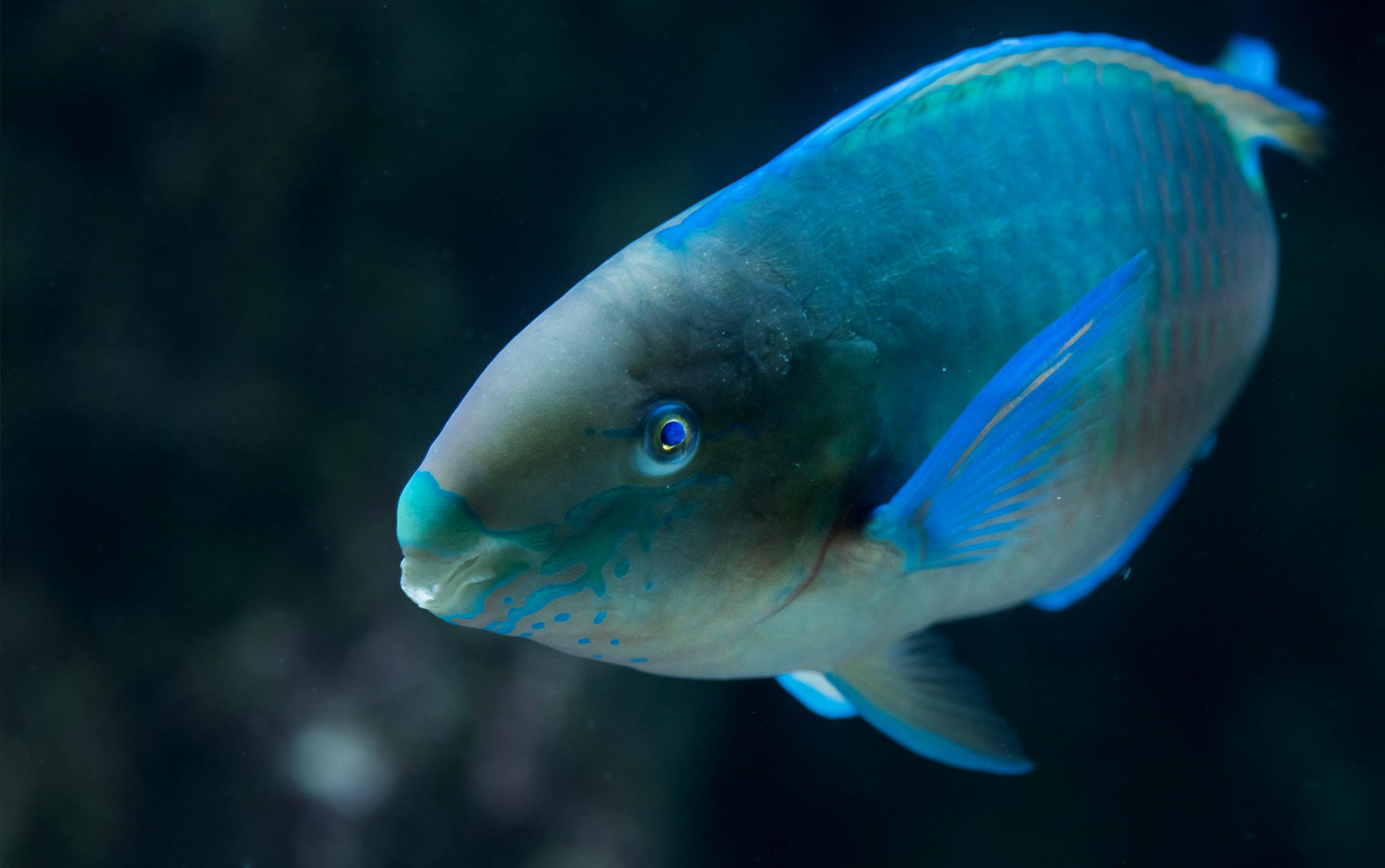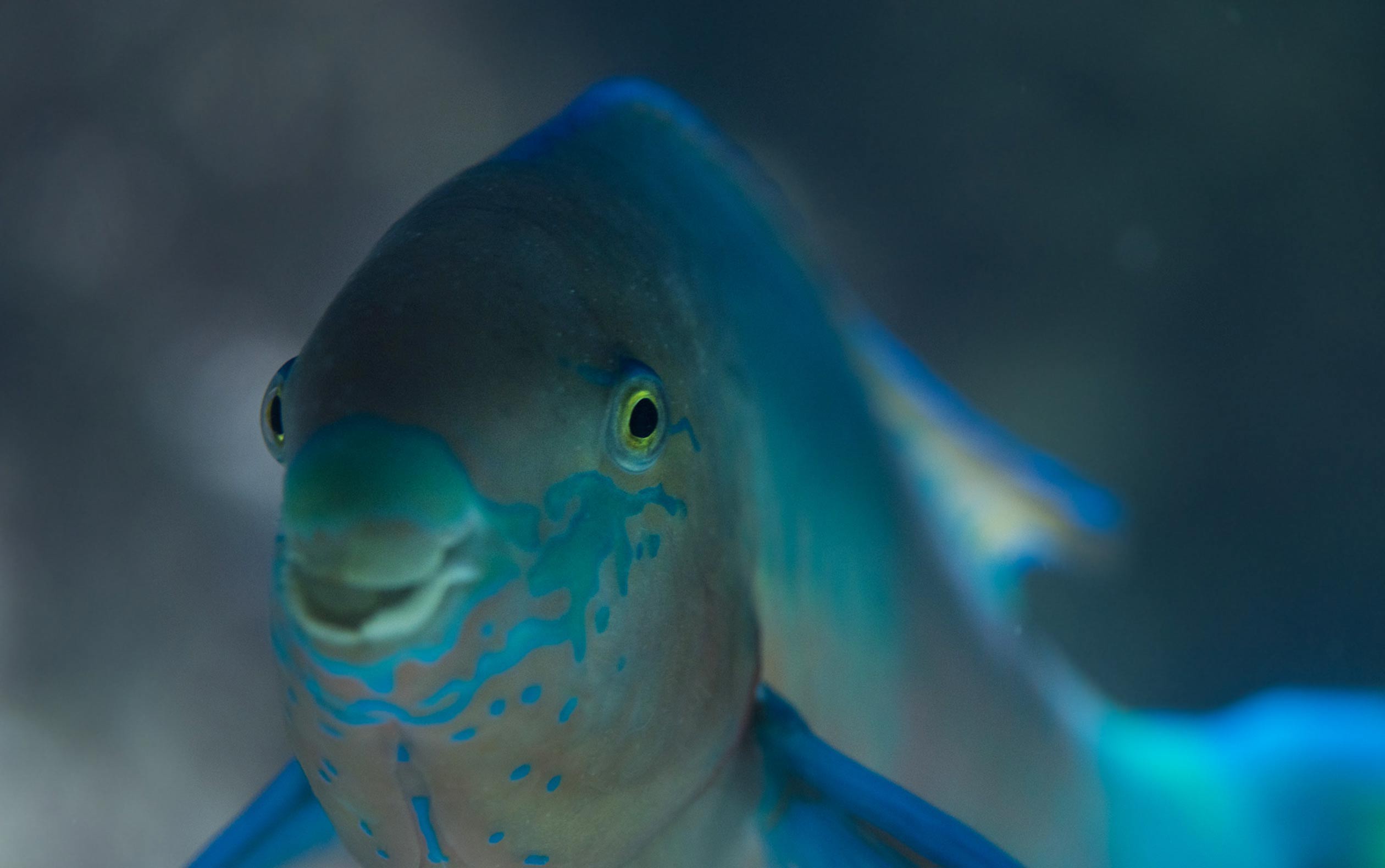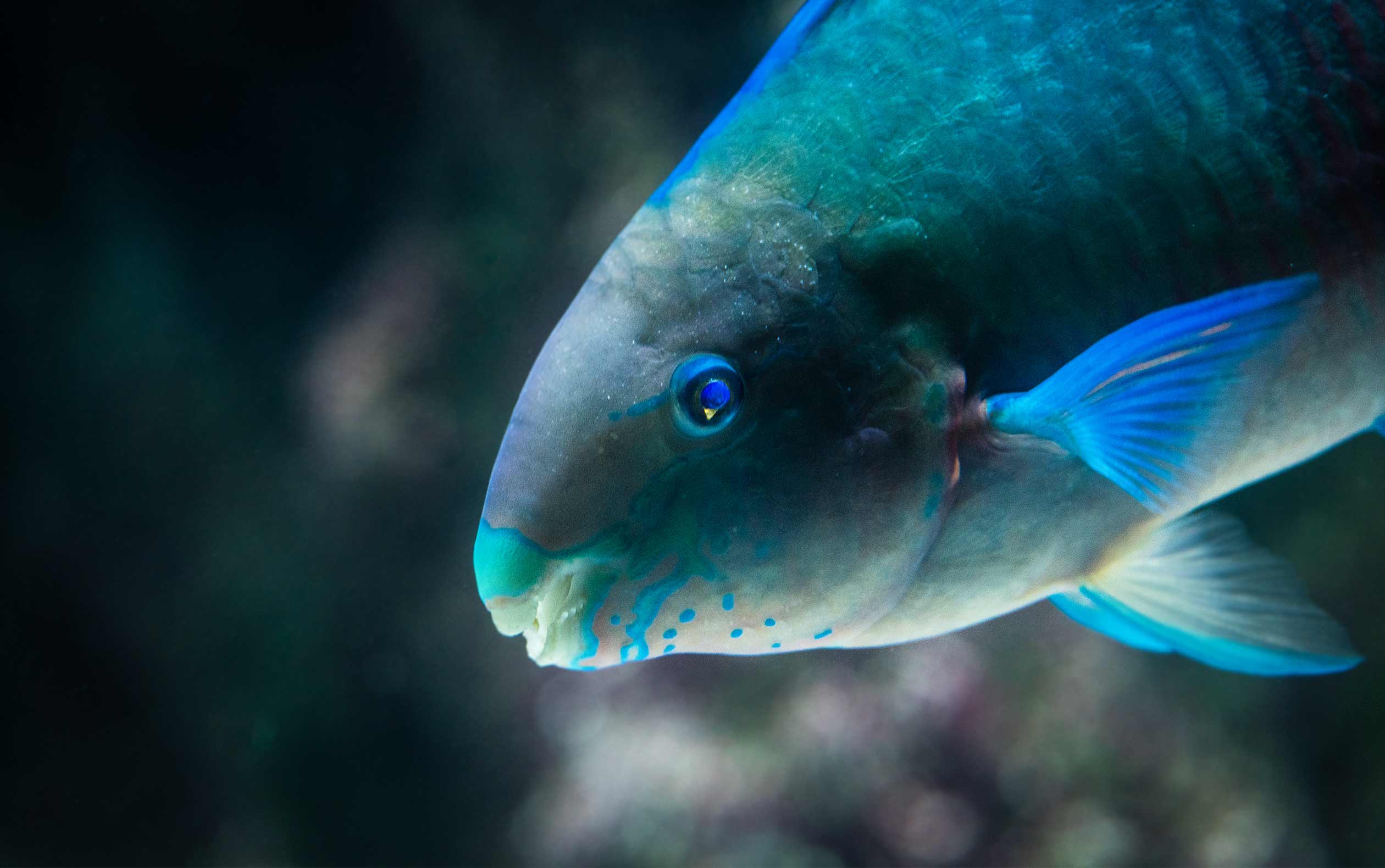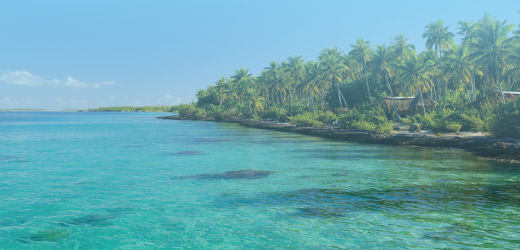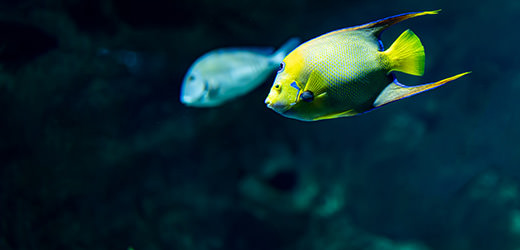Food
Parrotfish owe their name to their colours and their teeth joined together in the shape of a beak, which allows them to grind coral skeletons, contributing to the creation of coral sand.
A single parrotfish can produce more than 90 kg of sand each year. They feed mainly on algae, which they scrape off rocks with their beaks. The fragments of rock that they pull off are then ground in a pouch similar to a gizzard.
Additionally, to enable them to attack hard coral skeletons and stubborn algae, their pharynx is lined with several rows of teeth that can grind them into a fine powder.
